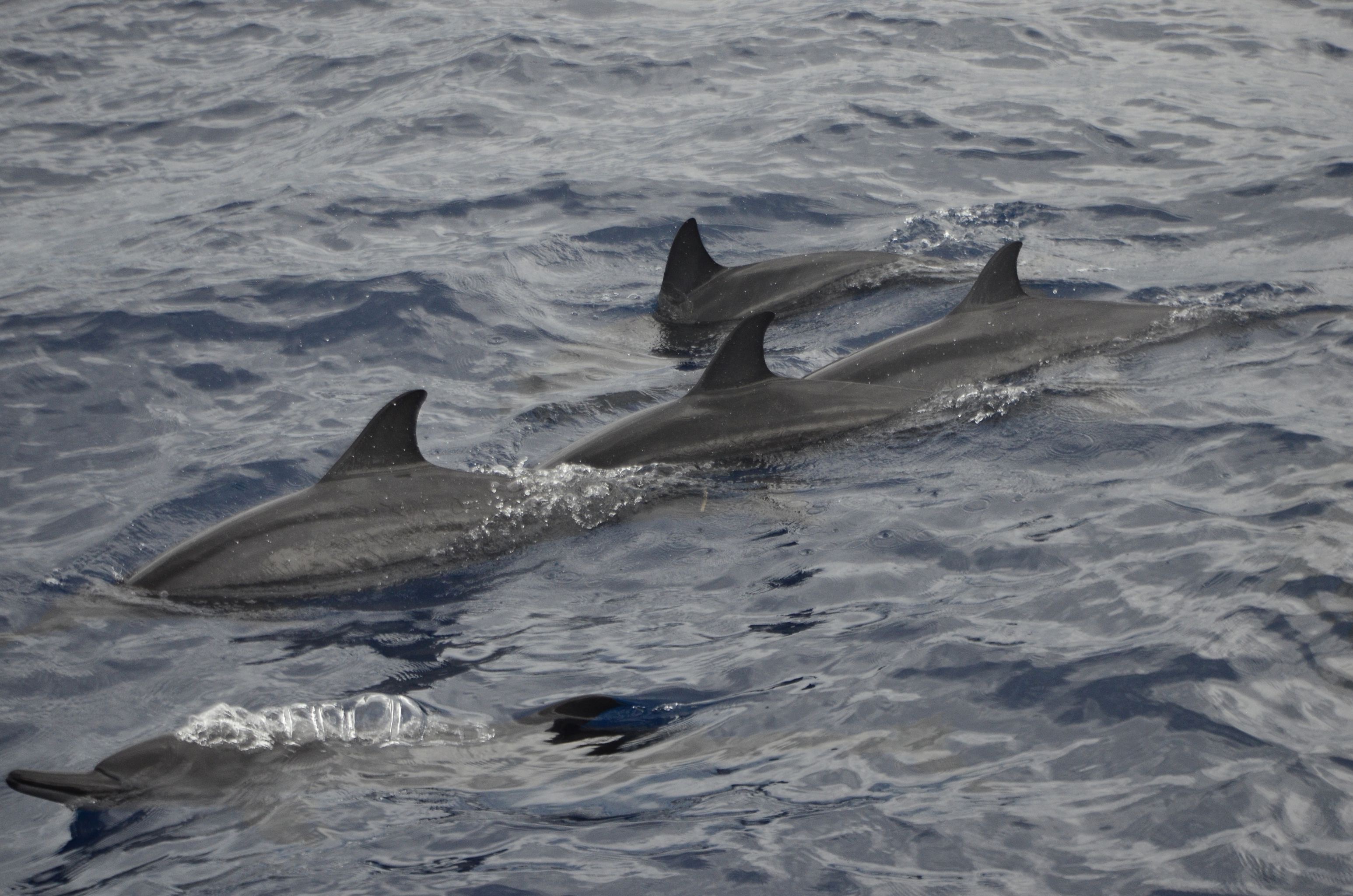The number of dolphins in the Tañon Strait—a narrow water passage between Cebu and Negros islands—is declining, researchers from the University of the Philippines - Diliman College of Science (UPD-CS) warned.

The Tañon Strait, according to the group, is home to numerous cetaceans, including 15 species of dolphins and whales. Cetaceans are a group of marine mammals that includes whales, dolphins, and porpoises.
In the survey conducted by the UPD-CS from July 20 to 23, it showed “deeply concerning trends, such as a decrease in dolphin numbers, a reduction in species diversity, and evasive behavior possibly linked to increasing human activity in the area.”
“We encountered only between 80 and 90 individual spinner dolphins throughout our four-day survey,” said UPD-CS Marine Mammal Research and Conservation Laboratory (MMRCL) Dr. Lemnuel Aragones, who spearheaded the survey focusing on dolphin populations within the southern part of Tañon Strait.
He noted that in the past, these surveys witnessed vibrant gatherings of diverse species of cetaceans, including various types of dolphins and species of whales, with groups of as many as 100 individuals spotted in a single day.
“This is in stark contrast to surveys in previous years, where we might spot as many as 100 individuals in just one day,” he said.
The recent survey only spotted three species—spinner dolphins, common bottlenose dolphins, and dwarf sperm whales.
As such, researchers have also observed the “evasive behavior of the dolphins, a possible sign of stress or disturbance due to the persistent presence of aggressive dolphin watching boats.”
Aragones and his team, who have been monitoring the region since 1997, noted a huge increase in the number of dolphin watching boats, even notwithstanding the destruction caused by Super Typhoon Odette in 2021.
Researchers said the area currently hosts around 60 boats, down from the original 260.
“Too many dolphin watching boats in the area disrupts the cetaceans’ habits,” Aragones pointed out. Moreover, Aragones warned against the overutilization of the area’s resources.
“There should also be a comprehensive assessment of fisheries resources in the entire Strait as there is clearly less food now for these creatures,” he went on.
The scientists have proposed a number of measures to preserve the delicate ecosystem and to safeguard the remarkable marine mammals dwelling in Tañon Strait, including the imposition of a moratorium on adding more dolphin watching boats to the already existing fleet.
Researchers also said a comprehensive assessment of fisheries resources, including fishing activities, in Tañon Strait is essential as a decline in food availability may be exacerbating the dolphins' struggles.
Strict monitoring and regulation of illegal, unreported, and unregulated fishing (IUUF) practices in the area must also be done, the researchers added.
It is also essential to educate boat operators on responsible dolphin watching protocols, Aragones stressed.
“A certification process that trains operators to navigate around dolphins without causing stress could play a pivotal role in protecting these charismatic animals,” Aragones stated.